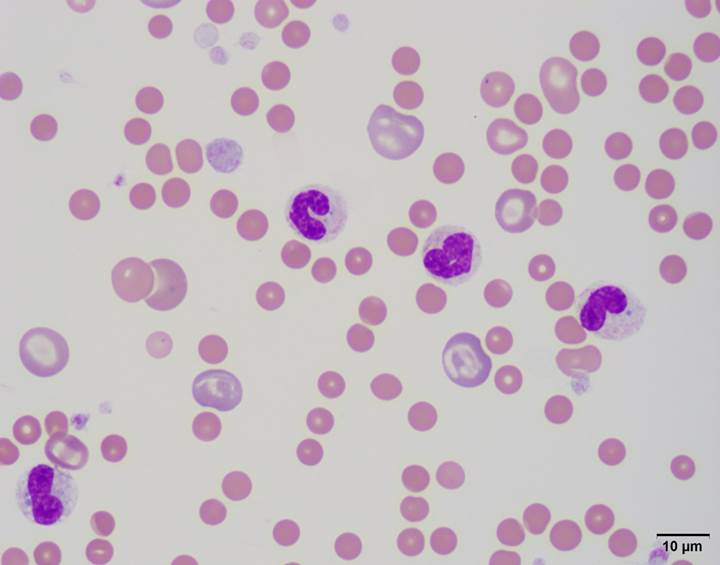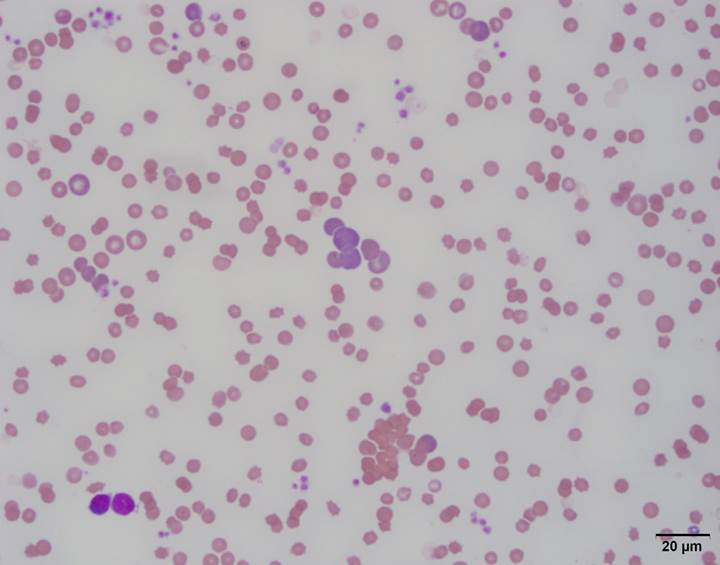Case of the Month
Two cases of anemia
Case #1

Blood smear from 8 year old pug with RBC count of 2.28 X 106 and hematocrit of 18%
Note the predominance of smaller RBCs lacking central pallor (spherocytes) and the presence of larger, RBC with blue coloration (polychromatophilic RBCs ) indicative of regeneration.
What is your diagnosis?
Immune mediated hemolytic anemia
Case #2

Blood smear from a 10 year old cat with RBC count of 2.3 X 106 RBCs and hematocrit of 57%
Note the aggregation/agglutination of RBCs, some of which are polychromatophilic (blue).
What is your diagnosis?
Immune mediated hemolytic anemia
Interpretation
Diagnosing Immune Mediated Hemolytic Anemia - The Importance of Blood Smear Review.
Laura A Snyder DVM DACVP and Jennifer Brazzell DVM DACVP
Immune mediated hemolytic anemia (IMHA) is a complex disease that develops due to anti-RBC antibody production. To ensure proper treatment, IMHA must be distinguished from blood loss anemia and non-immune mediated hemolytic disease. Blood smear review is a critical first step in this process!
In dogs, blood smear features of IMHA classically include spherocytes; macrocytic, polychromatophilic red blood cells (evidence of regeneration); and agglutination. Spherocytes are best identified in the monolayer of blood smear and are characterized by a smaller than average size, a lack of central pallor and a darker color compared to their normal counterparts. They are sometimes described as looking like dark red rubber balls.
Normal feline RBCs lack central pallor and therefore spherocytes cannot be confidently identified in this species. For this reason, pathologists must rely on the presence of agglutination to raise suspicion for IMHA. In cats, it is particularly important to distinguish true agglutination from rouleaux. Rouleaux tends to form linear, sometimes branching chains of rowed erythrocytes. In contrast, agglutination tends to form variably sized, grape-like clusters which may incorporate polychromatophilic erythrocytes.
At Marshfield, we review a blood smear from every CBC that is submitted. This takes time and experience, but it allows us to identify subtle changes that might otherwise be missed. Trust us to give you more than just the numbers!